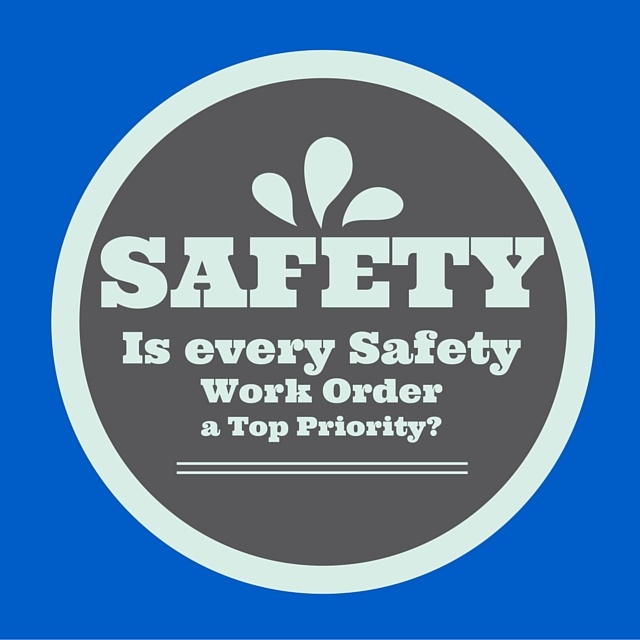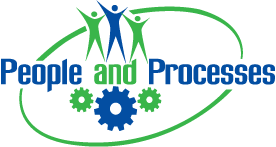 You are the Maintenance Planner Scheduler at Alpha XY Corporation. It’s the first thing on Monday morning and you run a scan for unplanned jobs that have popped up in your queue since last week. Among the jobs to be planned is one to rebuild a pump at the Slurry Feed system. You scan your Job Plan Library and notice this one has never been done before so you head out to the field to research the job. At the job site, you make your notes and take a few pictures with a camera to help your planning effort.
You are the Maintenance Planner Scheduler at Alpha XY Corporation. It’s the first thing on Monday morning and you run a scan for unplanned jobs that have popped up in your queue since last week. Among the jobs to be planned is one to rebuild a pump at the Slurry Feed system. You scan your Job Plan Library and notice this one has never been done before so you head out to the field to research the job. At the job site, you make your notes and take a few pictures with a camera to help your planning effort.
Back at the desk, you attempt to pull up the Bill of Materials for that piece of equipment in the Functional Location. It turns out there is no Bill of Material (BOM). When you look at the asset information for that Functional Location, there is nothing that you could order the pump by. While you are in the discovery mode for the pump, you notice that the adjacent equipment is not reflected in the CMMS either. Geez! Well it happens that you did get the nameplate data from the pump when you visited the site so you can pull the spare from the Storeroom and send the pump for repair. What about all of the other adjacent equipment that we have no information on? How do we capture the data on those items and build the BOMs?
Since you have the information on the pump itself, you can pull the OEM parts list from the Vendor manual. Using the work order information and your experience, you can make an educated guess on the parts required to rebuild it. To start a Job Plan, all you need are the crafts required, the estimated hours, and the materials. The Technician can provide the task steps and other Job Plan information on the work order feedback as part of a continuous improvement process.
Now that you have the OEM information, you should scan and link it to the equipment using the Document Management System. For the parts that you are ordering, you should create Material Masters with stock levels of 0/0 for non-stock items so that you can track usage and link these to the BOM for that pump. Since you are sending the Technician out to do the work, why not enable them to capture the nameplate data on the adjacent equipment as well while there? Once you identify that data, you can create the equipment assets in the CMMS so that you can order replacements if needed. In addition, you can gather the OEM parts list and other information, linking it to the equipment through the Document Management System like you did the pump.
See, for sites that don’t have a comprehensive asset listing and nameplate data, this is how we collect it. We typically don’t have the resources to do a complete and thorough walk-down across the site to accomplish this work all at one time if not done as part of the equipment installation. So we do it little by little, one area at a time. To facilitate the collection of nameplate data, we provide the Technicians with asset specification templates depending on the type of asset, i.e. a pump, motor, or gearbox. At a minimum inside your CMMS for each equipment type, you have fields that are needed, much like a specification sheet. This is the information required to order a replacement, the model number, serial number, frame size, hp, etc.


 I was recently conducting a Maintenance Planning and Scheduling course onsite. As with all of the classes that I facilitate, I make an effort to learn about those in attendance on a more personal level. This class was no different and shortly, I learned about the work history of several people. One had been there for 44 years, another for 37, and a third for 31 years. The guy who had been there for 44 years was 70 years old and because of his in-depth knowledge, they were asking him to stay around a few more years. It’s not out of financial need that he stays but a sense of duty and loyalty.
I was recently conducting a Maintenance Planning and Scheduling course onsite. As with all of the classes that I facilitate, I make an effort to learn about those in attendance on a more personal level. This class was no different and shortly, I learned about the work history of several people. One had been there for 44 years, another for 37, and a third for 31 years. The guy who had been there for 44 years was 70 years old and because of his in-depth knowledge, they were asking him to stay around a few more years. It’s not out of financial need that he stays but a sense of duty and loyalty. If you are like many Maintenance Planners that I have the opportunity to interface with, most aren't doing much using the job plan concept. The intent of the job plan is to better enable the craftspeople to execute their job with the materials, tools, and information in hand. Ideally, you really want a template to facilitate the development of these job plans. Recently, I did a webinar for Emaint which is a CMMS vendor on creating job plans. You can view it
If you are like many Maintenance Planners that I have the opportunity to interface with, most aren't doing much using the job plan concept. The intent of the job plan is to better enable the craftspeople to execute their job with the materials, tools, and information in hand. Ideally, you really want a template to facilitate the development of these job plans. Recently, I did a webinar for Emaint which is a CMMS vendor on creating job plans. You can view it  Why should we bother with this job plan thing anyway, after all the Technicians know what to do, right? If you were undergoing surgery, in addition to the proper training; you would expect a surgical team to have a set of procedures and checklists to perform their work on you. What if they started operating out of sequence before you were fully sedated? What if they left some of their tools or sponges behind when they closed you up? I hear you saying “But Jeff, we aren’t dealing with life or death when we work on equipment!” When you consider the environmental and safety consequences of the equipment that we work on, that may not be the case. I would guess that many of the people involved with some of the life ending and environmental disasters in recent memory never expected things to end the way they did either.
Why should we bother with this job plan thing anyway, after all the Technicians know what to do, right? If you were undergoing surgery, in addition to the proper training; you would expect a surgical team to have a set of procedures and checklists to perform their work on you. What if they started operating out of sequence before you were fully sedated? What if they left some of their tools or sponges behind when they closed you up? I hear you saying “But Jeff, we aren’t dealing with life or death when we work on equipment!” When you consider the environmental and safety consequences of the equipment that we work on, that may not be the case. I would guess that many of the people involved with some of the life ending and environmental disasters in recent memory never expected things to end the way they did either. You are the Maintenance Planner Scheduler at Alpha XY Corporation. It’s the first thing on Monday morning and you run a scan for unplanned jobs that have popped up in your queue since last week. Among the jobs to be planned is one to rebuild a pump at the Slurry Feed system. You scan your Job Plan Library and notice this one has never been done before so you head out to the field to research the job. At the job site, you make your notes and take a few pictures with a camera to help your planning effort.
You are the Maintenance Planner Scheduler at Alpha XY Corporation. It’s the first thing on Monday morning and you run a scan for unplanned jobs that have popped up in your queue since last week. Among the jobs to be planned is one to rebuild a pump at the Slurry Feed system. You scan your Job Plan Library and notice this one has never been done before so you head out to the field to research the job. At the job site, you make your notes and take a few pictures with a camera to help your planning effort.